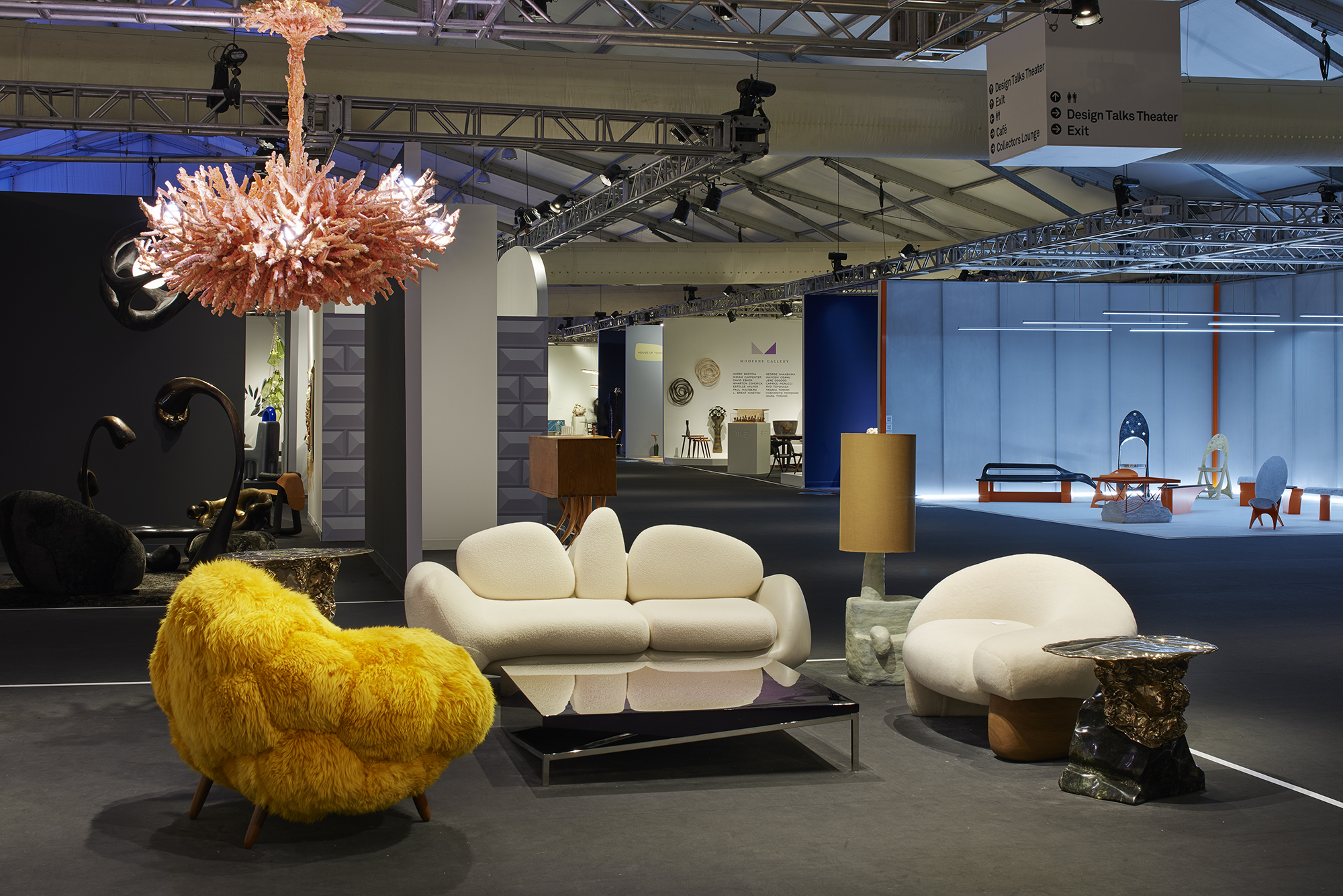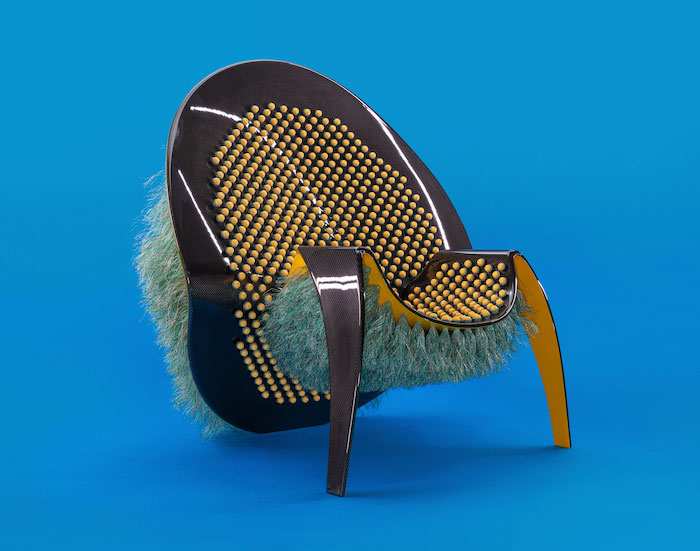The 17th edition of Design Miami made a triumphant return to its tented outpost, under the humanitarian-focused theme of ‘Human Kind’
After a pandemic-induced absence last year, Design Miami – widely regarded as the global authority on collectible design – returned to its Miami Beach location with renewed vigour. Responding to the theme of how design can play a role in improving the human condition, the show leveraged its influence to spotlight how creators are contributing towards a more equitable future through the medium of design. In addition to social commentary, galleries relished the opportunity to exhibit work that had been awaiting exposure since before the onset of the pandemic, as well as work created during – and in response to – the global crisis.
While Salon Art + Design (which took place last month in New York), focuses primary on the A&D community and local New York collectors, Design Miami is known for drawing a much wider audience, and is conceivably more collector-driven overall. Given the Covid restrictions still in place, the fair saw fewer European clients than usual and an increased focus on contemporary versus historic design.

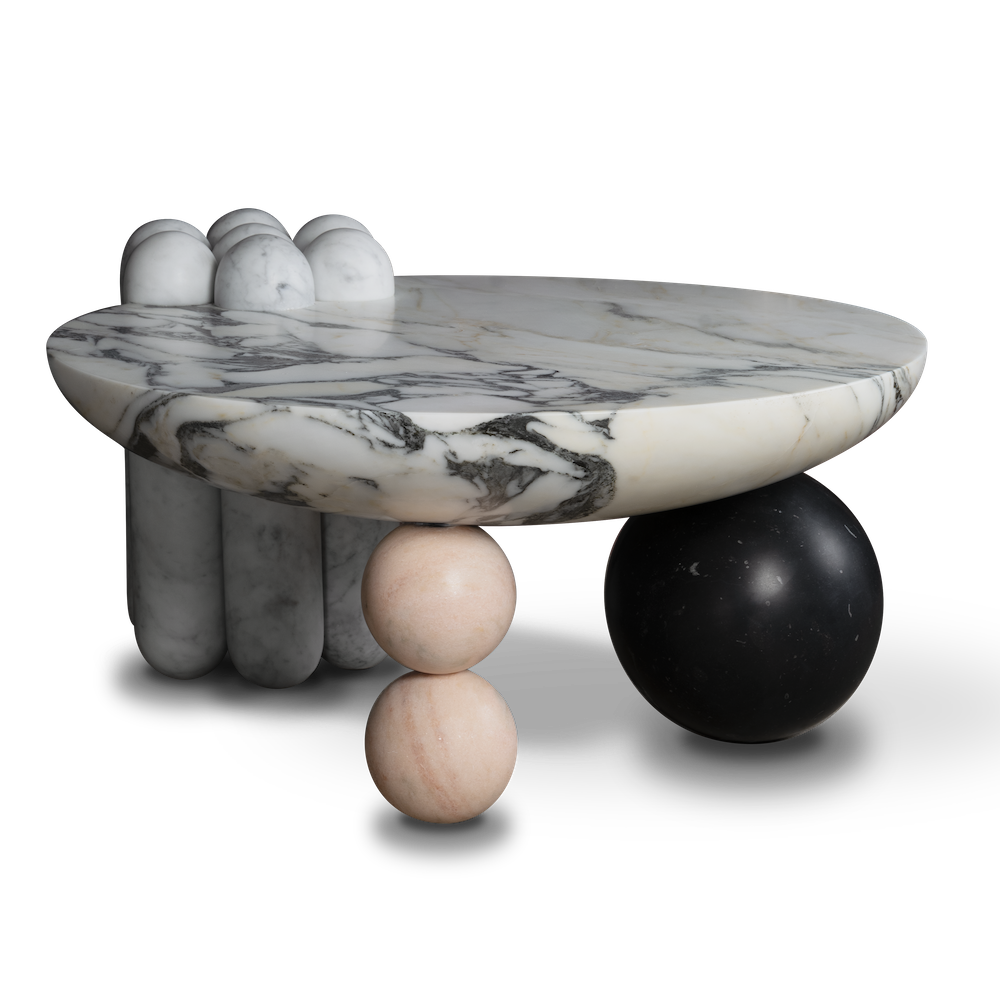
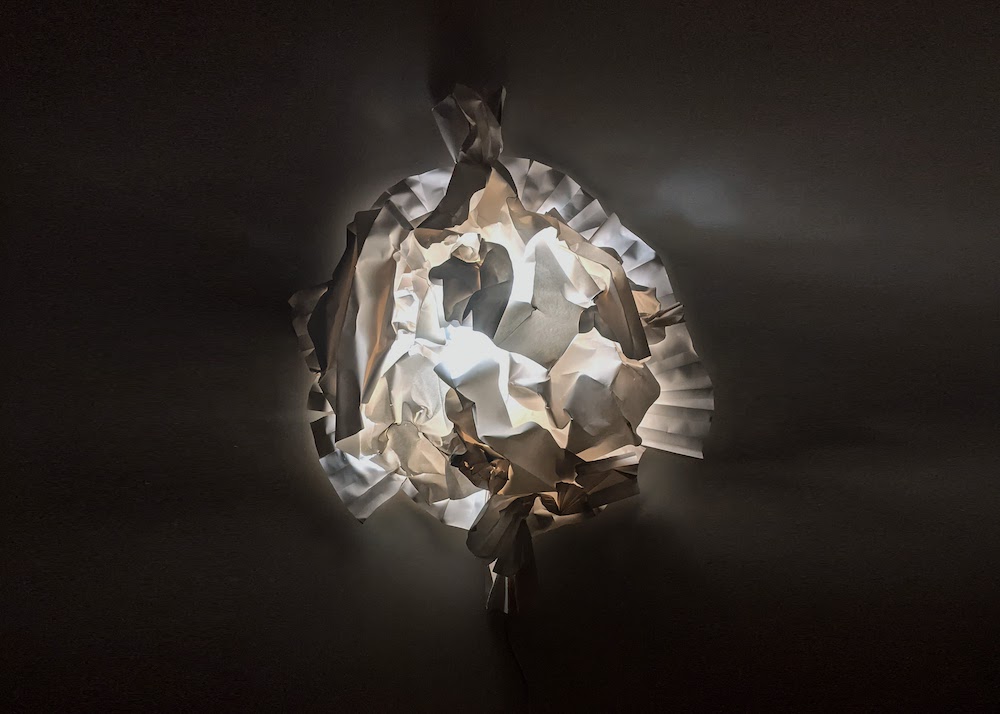
“The fair was by far the most inclusive demographic of designers shown at any design fair, which was very refreshing, with many new names and less of the old guard,” said Evan Snyderman, co-director of New York-based design gallery R & Company, when asked about his overall impressions of the fair. “Design Miami offers a fantastic international platform,” added Michael Graham from Converso, the Chicago-based gallery who presented The Firehouse – a recreation of John Dickinson’s extraordinary San Francisco interior featuring Dickinson’s hand painted trompe-l’oeil dressing cabinet. “The undergirding, production and logistics have not been matched. It’s a place where special material will find an audience and buyers.”

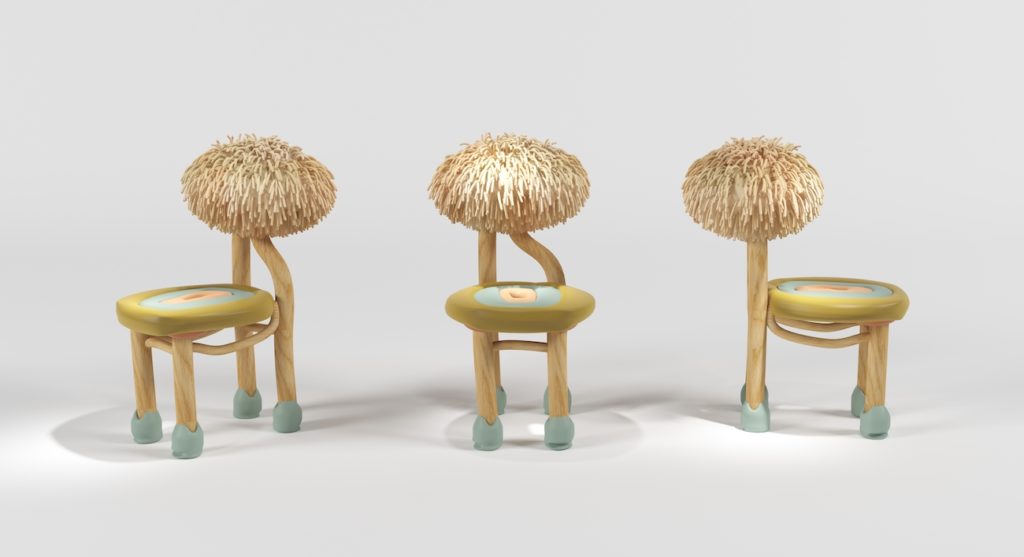
In addition, an increase of interactive or immersive environments – which encouraged lounging and interaction – were more prevalent this year. While not interactive per se, South African gallery Southern Guild (who overcame considerable logistical hurdles to present at the fair, given the current intensity of the pandemic in the country), presented Studio Visit, an exhibition of ceramics specifically commissioned for the fair, from four of South Africa’s most accomplished artists working in clay.
Southern Guild’s booth won Best Gallery Presentation. “We made a commitment very early on and this bravery really paid off,” explained Trevyn and Julian McGowan when asked about their unshakeable commitment to the fair and their repertoire of artists. “A shift like this can be good, though, as it makes room for other things to foster and grow. The response to our artists’ work was unprecedented and we saw many returning clients and new collectors, including some of the top ones in the world.”
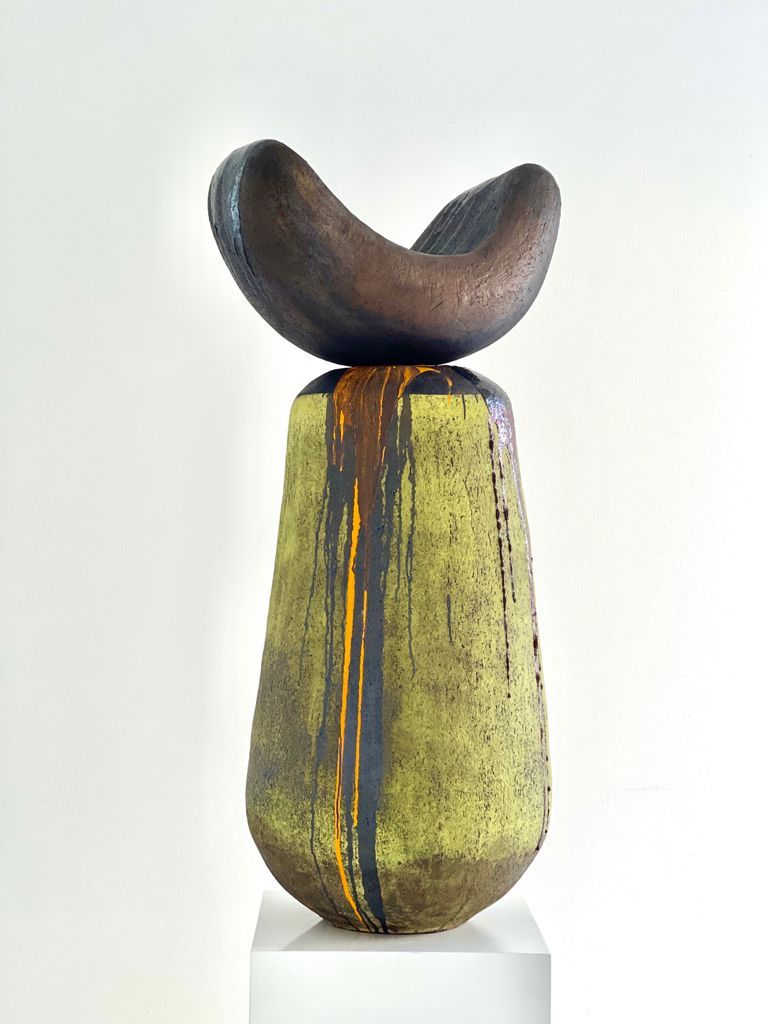
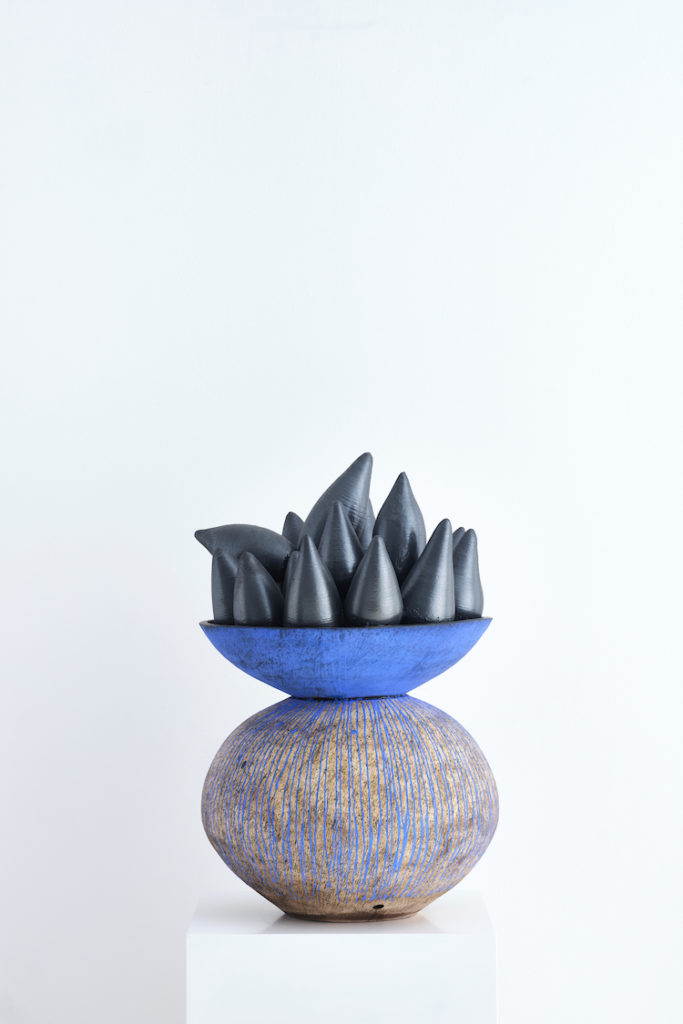
Given the broad scope of the show this year, here’s a closer look at four galleries that covered the gamut in terms of design eras, materiality and process:
TODD MERRILL
Todd Merrill Studio exhibited new work by a group of 10 artists who were invited to share their interpretation of the gallery’s theme, Relevant and Reflective – which references the changes of the past two years as they relate to home, personal space, self-expression, escapism, and the natural world. “Centered on a return to craft-based contemporary design, each artist takes a hands-on approach,” explains founder Todd Merrill, “bringing together rigorous studio experimentation and meticulous craftsmanship in an effort to create a new visual vocabulary that advances established artistic and material boundaries of ceramics, glass, furniture design and fine art.”
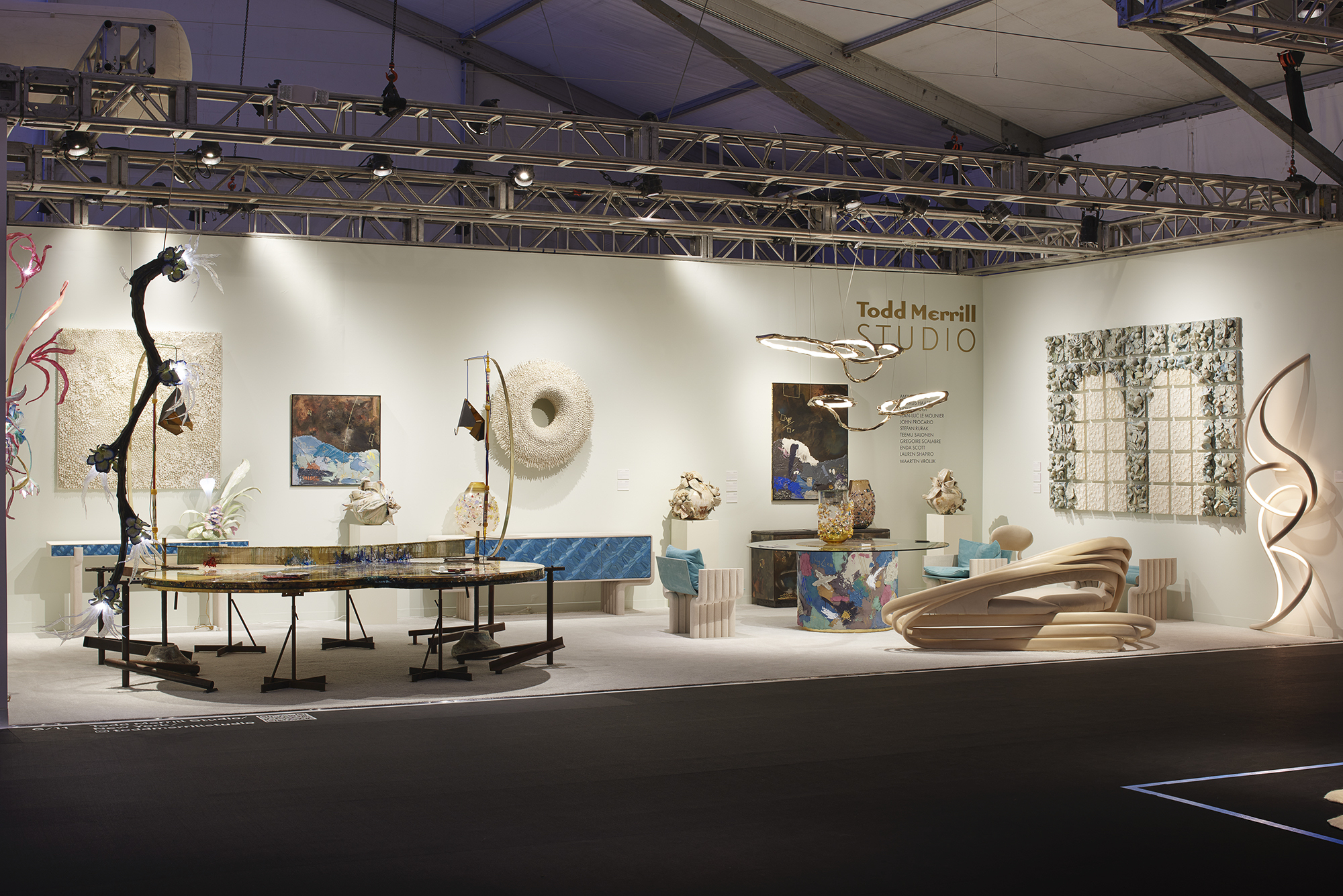
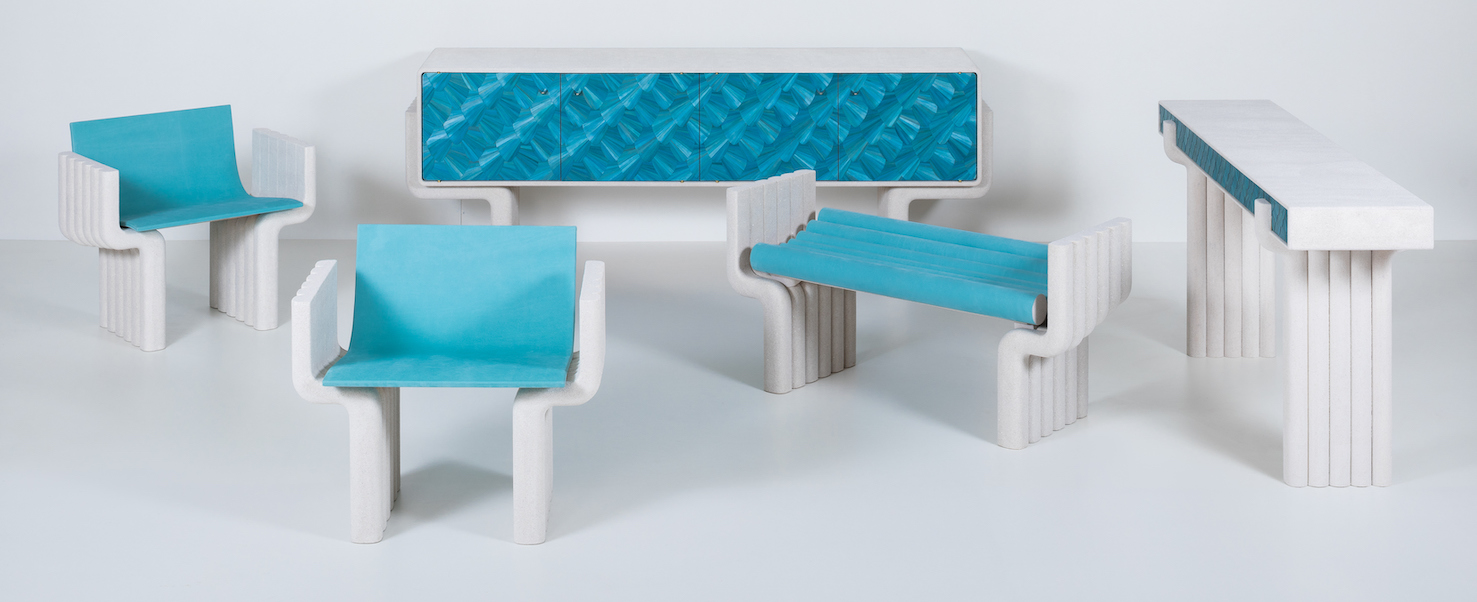
A luxurious component in materiality always stands out among pieces at the gallery alongside extraordinary levels of detail. Anchoring the booth were artists Grégoire Scalabre, Teemu Salonen, Mindy Horn, Lauren Shapiro, and Martin Vrolijk, who exhibited new ceramic works, with furniture from French artist Jean-Luc Le Mounier (above) demonstrating the artist’s new technique of combining quartz and mica to create a textured surface reminiscent of sand.
R & COMPANY
Co-founders Evan Snyderman and Zesty Meyers are one of the most influential duos in the domain of contemporary collectible furniture, with a reputation for championing emerging designers, and with a notable commitment to storytelling as it pertains to the history of their collaborators and their pieces – to the extent of having an expansive archive and library dedicated to this.

The pair used their Miami booth to “spotlight the distinct work of a group of rising talents, whose conceptual and technical approaches are shaping the future of design and exciting a broad range of audiences,” as well as using the space to present work from some of their long-time artists. Pieces at the booth included contributions from Serban Ionescu, Joyce Lin, Luam Melake, Jolie Ngo, Sayar & Garibeh, and Norman Teague, with selections from Studio Job’s Car Crash Series (below) and major works by Rogan Gregory, Joaquim Tenreiro, and Jeff Zimmerman. Wendell Castle’s seminal 1962 work Chest of Drawers (above) – presented with historic materials on its significance – was one of the most talked-about pieces at the fair.
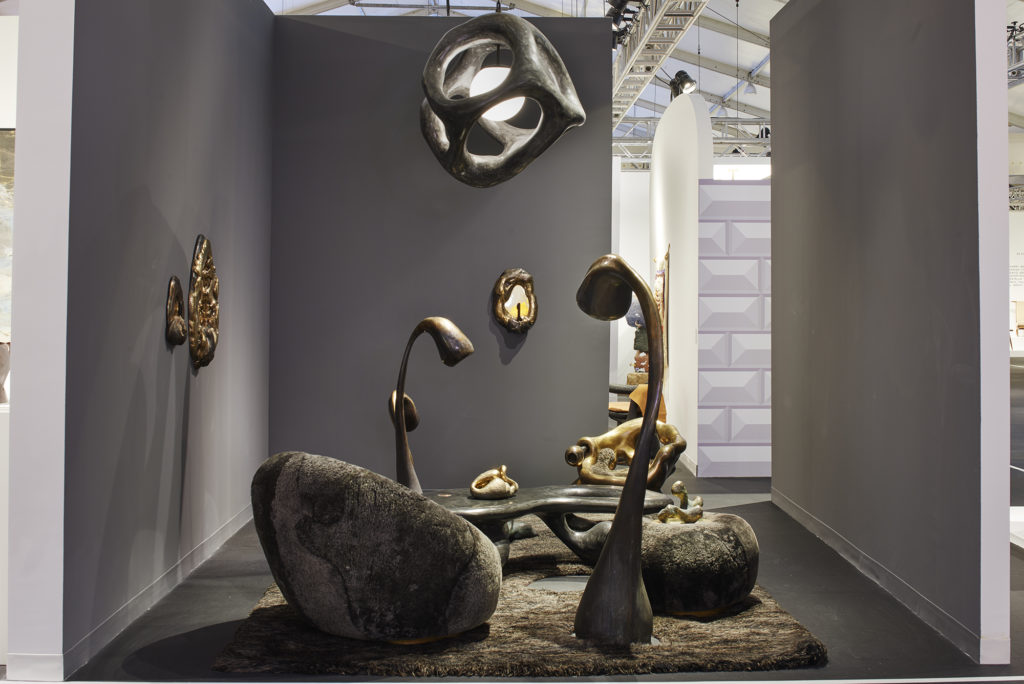
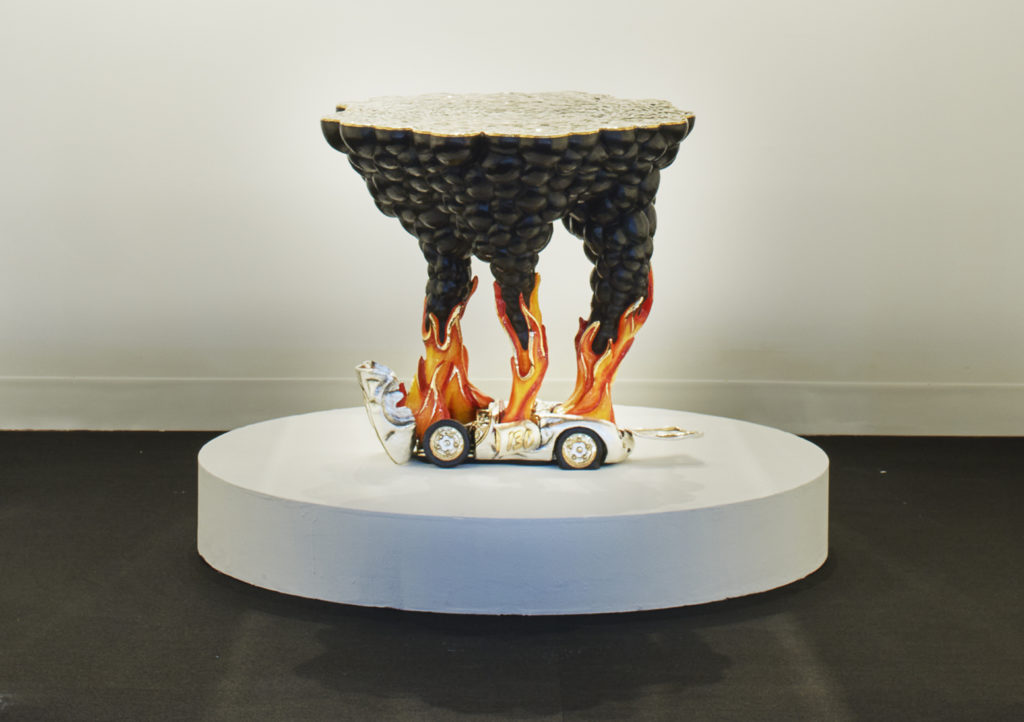
Building on an impactful Design Miami 2019 showing, Rogan Gregory’s work Bronze, Shearling, and Black gypsum was presented in an immersive black environment, highlighting the artist’s life-long interest in abstract forms, evolutionary and biological systems, and the impact of humans on the natural world.
When asked if the pandemic had placed more attention to the world of design and the acquisition of objects, Meyers says: “Culture is the ultimate healer. For better or worse, culture has always moved things forward and the most recent interest and investment in design proves it.”
MODERNE
Moderne Gallery, known for their focus on works from the American Craft Movement, presented new early works produced in 1935–1936 by George Nakashima. “Until now, there were only two known to exist, both in the permanent collections of Japanese museums,” explains Moderne’s co-director Josh Aibel. The pieces are drawn from Nakashima’s time working for the architect Antonin Raymond, who was involved in the design and furnishing of Saint Paul’s Church in Karuizawa, Japan. “The architectural members of the church were peeled cryptomeria logs, a sacred Japanese wood, and the chairs were made from branches of the tree,” explains Aibel.
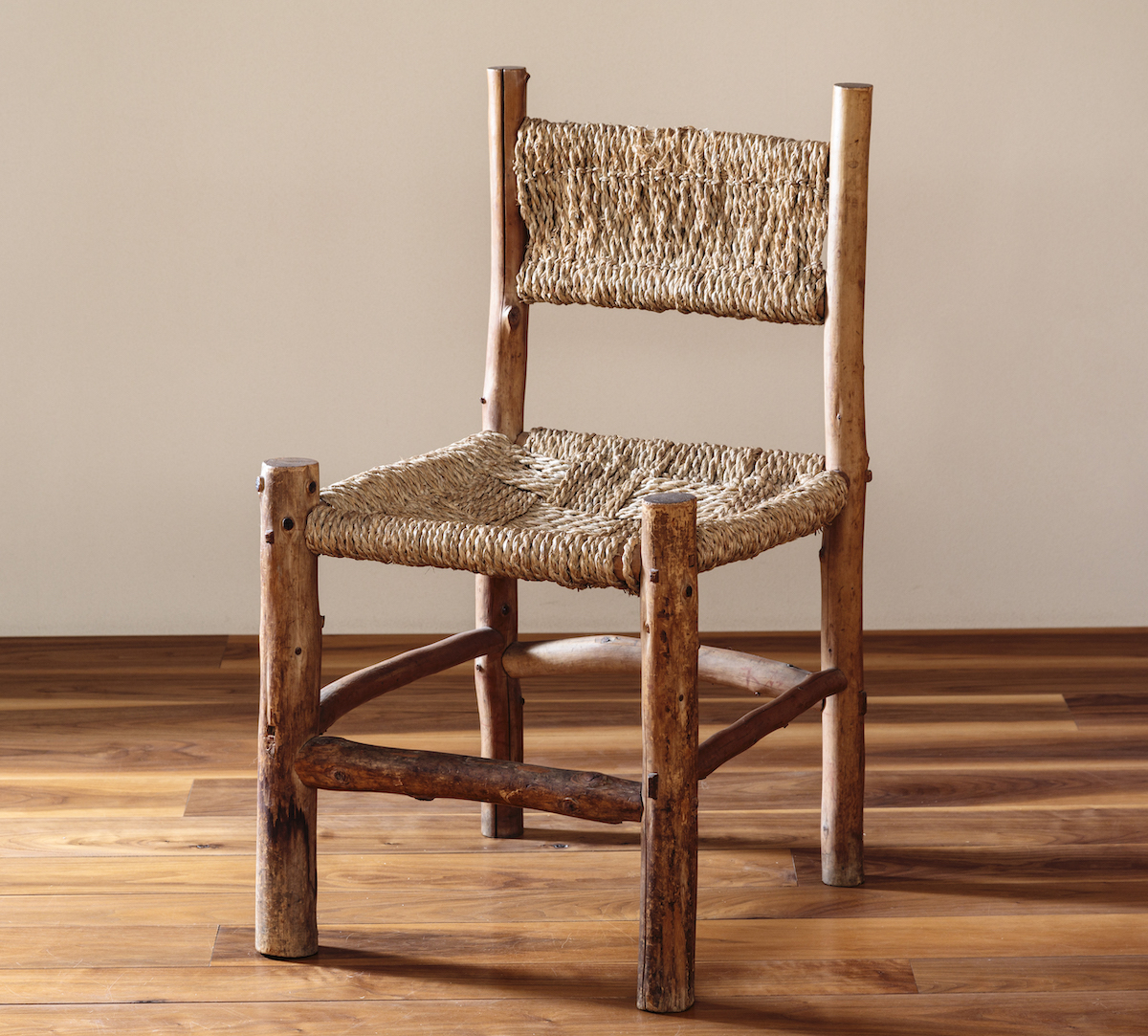
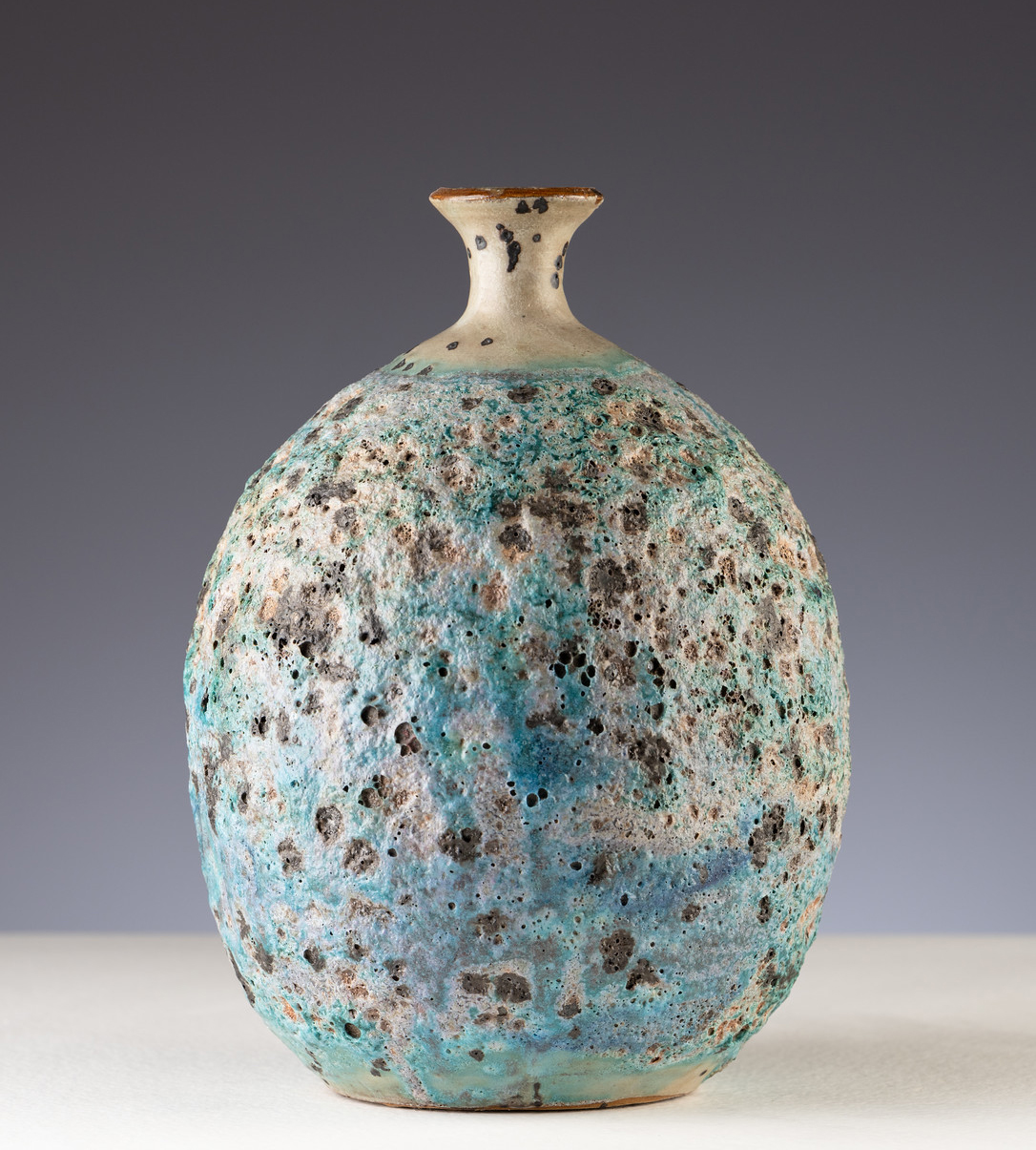
The pieces are the earliest known pieces designed by Nakashima, possibly in collaboration with Noémi Raymond, Antonin’s wife and partner. The gallery posit that the design is clearly the precursor to Nakashima’s grass-seated chair, first designed and made in 1944 for René d’Harnoncourt shortly before his appointment as Director of the Museum of Modern Art.

HOSTLER BURROWS
When Juliet Burrows and Kim Hostler founded Hostler Burrows 1998, they did so with the aim of founding and nurturing longstanding relationships with their artists and the design community at large. Their ideals have not shifted over time, as evidenced at their Design Miami showing. The pair exhibited a selection of new works by several of the contemporary artists they represent, alongside key pieces of 20th century Scandinavian design. Contemporary work included a new ceramic wall installation by Maren Kloppmann made especially for the fair, a Frida Fjellman chandelier, recent sculptures by Jasmin Anoschkin, Steen Ipsen, Martin Bodilsen Kaldahl, and Donna Green, and a tapestry by Kari Dyrdal.
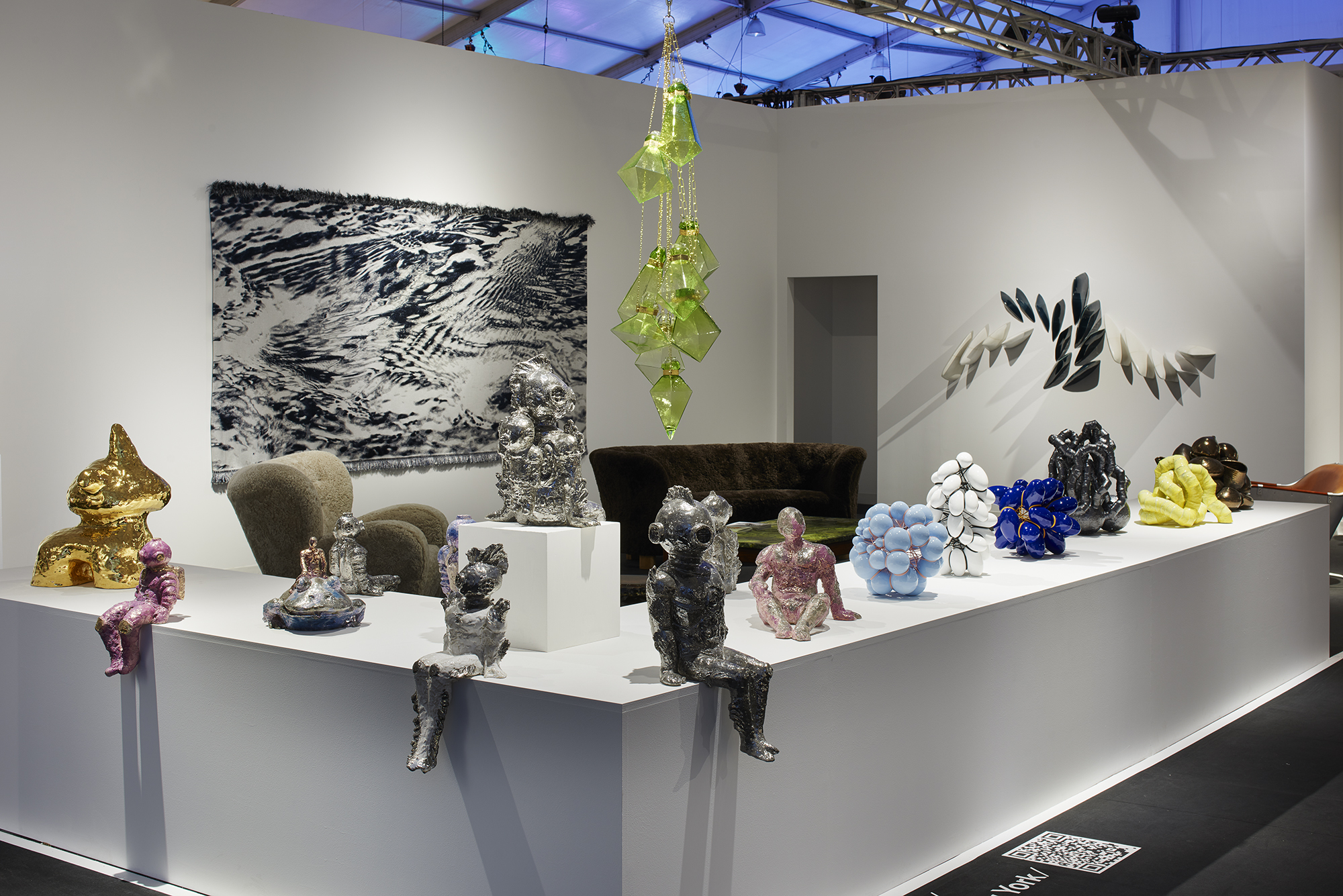
Vintage pieces included a Märta Blomstedt armchair, a rare Erling Viksjø table with a Norwegian lizardite top, and a Mats Theselius Rex chair. “We had consistently strong interest throughout the run of the fair, which was exciting to see,” says Kim Hostler. “We received a lot of interest in the work of contemporary Finnish artist Sakari Kannosto. We were showing his new body of work, Children of the Flood, for the first time, and it was very well received.”
Effect Magazine is brought to you by Effetto



